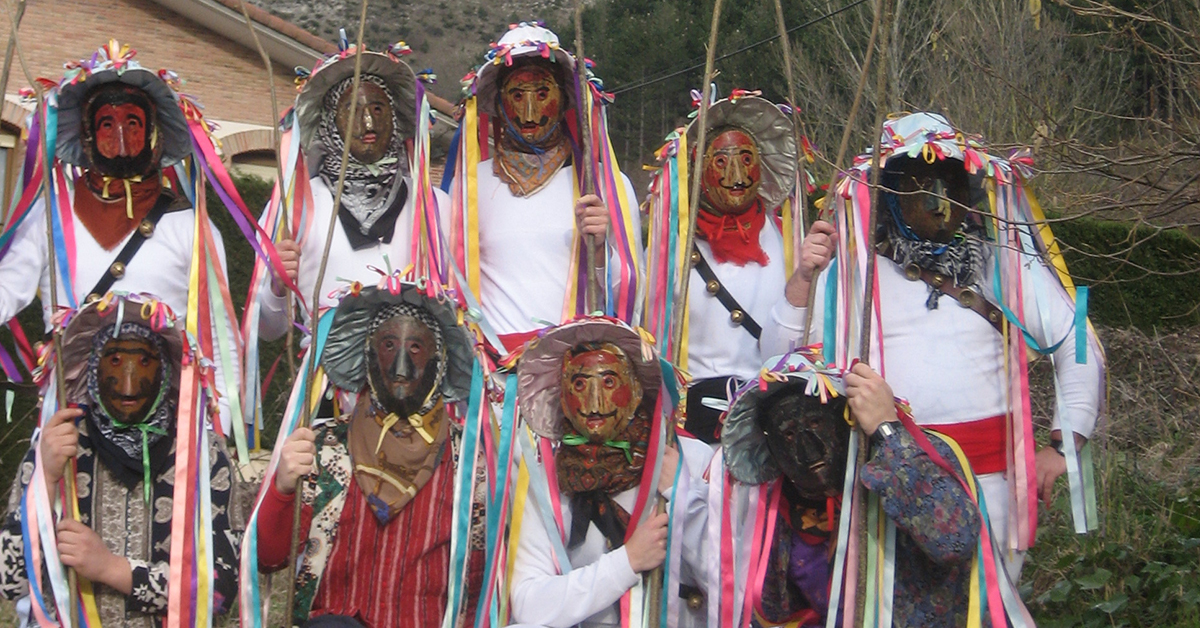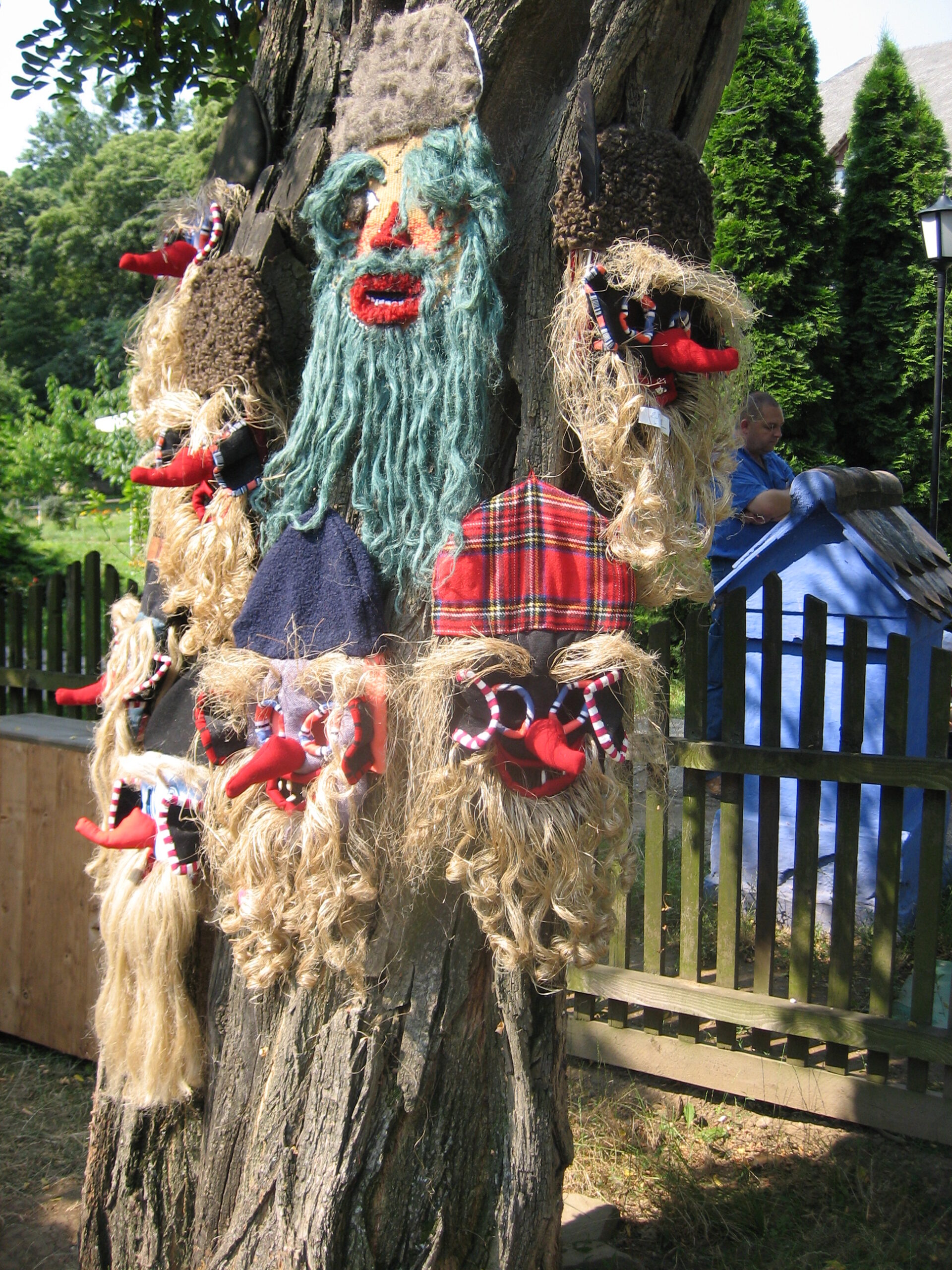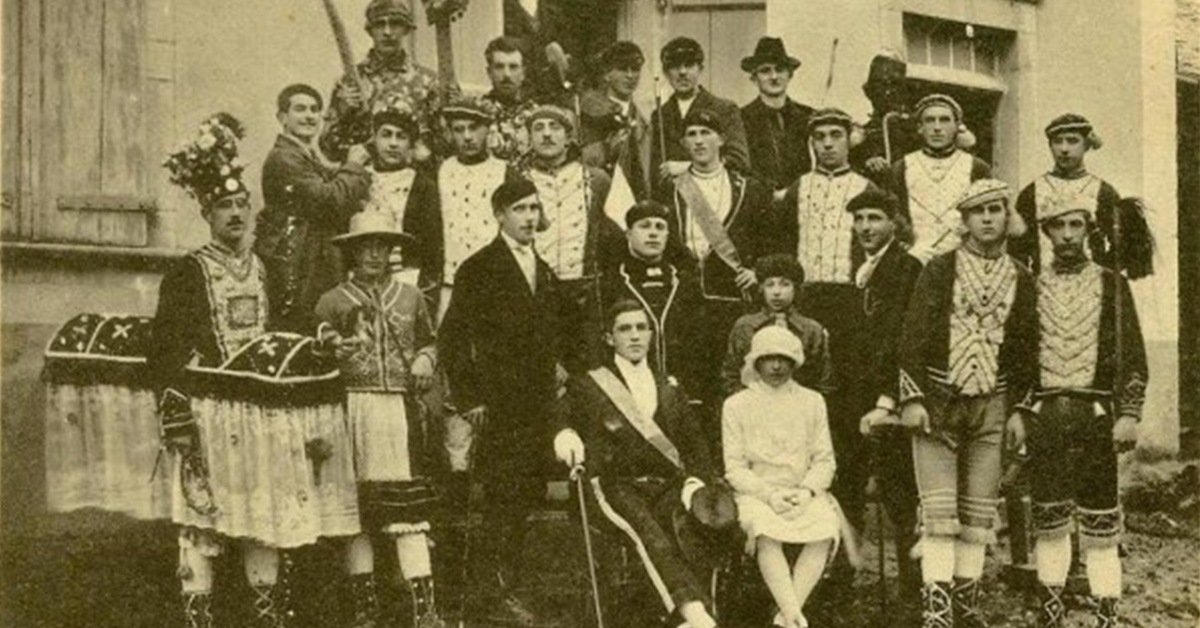Basque ethnography at a glance
Winter masquerades are a series of complex festive rituals observed in much of western Europe between Christmas, beginning of the year, and the end of Carnival time. These celebrations usually combine communal territoriality or social cohesion, neighbourliness and commensality, obscure rituals (fertility or the rebirth of Nature), somewhat dual emotions in the presence of masked people, and as might be expected, secretly or anonymously organized youth groups. These traditionally take the form of either miscellaneous or modest troupes, characterized by music, uproar, dance, and theatricality. In them, one can observe rowdy, intimidating masked individuals holding whips or similar implements, wild beasts, grotesque figures, critical characters staging everyday scenes of collective life, and even road sweepers.
Without following a common pattern, and by way of example, we shall highlight the following: the goat and the bear troupes of Romania; the impressive and boisterous Bulgarian kukeri dancers, wearing large dangling bells, perform scenes of marriage, pregnancy and childbirth; in the French-speaking canton of Valais (Switzerland), the disturbing and monstrous figures of the tschäggättä merge with the winter snow, armed, and sounding deafening bells while chasing young children, and the massive masked empaillés of Evolène enveloped in large jute sacks struggle to move about; and in contrast, cunning big-nosed masks and their satires and guttural cries are particularly noteworthy in the Italian Alps. Dance, music, duality of troupes and theatrical plots are the major identifying features of the masquerades held in the Basque Country (in Zuberoa, Lapurdi, Lantz, Zalduendo…).
Besides, masquerades of all types and compositions are deep-rooted events across the Iberian Peninsula. In Cantabria, for instance, we find the Vijanera of Silió festival and its great variety of characters (sonorous zamarracos, jumping galáns and shameless madamas, Pepona, bears…); sidros or guirrios, jumping left and right, sticks in hand, complemented by the acid theatricality of comedies are fundamental in the Antroxu of Asturias and in the Antruejo of León or Zamora; the Galician Entroido, celebrated in Laza, Verín and Xinzo de Limia, in Ourense, is characterized by the noisy masks of peliqueiros, cigarróns and pantallas and their whipping; and in the north of Portugal the Entruido offers a wide range of similarly loud masks, along with distinct, unique features.
Coinciding with the festive passing of the end and the beginning of the year, reaching out to Carnival, and curiously enough, sometimes associated with specific Christian celebrations (Christmas, Epiphany, St Stephen, St Anthony, St Sebastian, St Vincent, Candlemas…), attractive and colourful masquerade festivals unfold. Despite the evolutionary or regenerative processes which they have been subjected to, their manifest regularities, and the annual renewal of events, they actually have an interesting background, which to this day remains enigmatic and rather opaque. Masquerades do indeed require a multidisciplinary analysis (history, psychology, sociology, anthropology…) so as to discover or intuit the secrets which these winter celebrations still hold.
Josu Larrinaga Zugadi – Sociologist
Translated by Jaione Bilbao – Ethnography Department – Labayru Fundazioa




